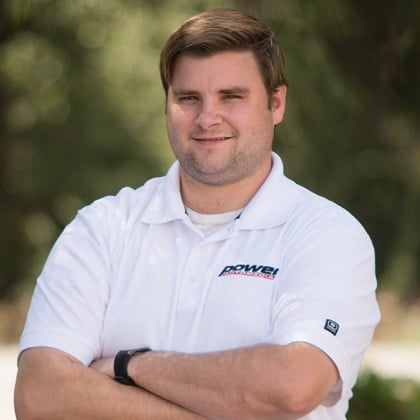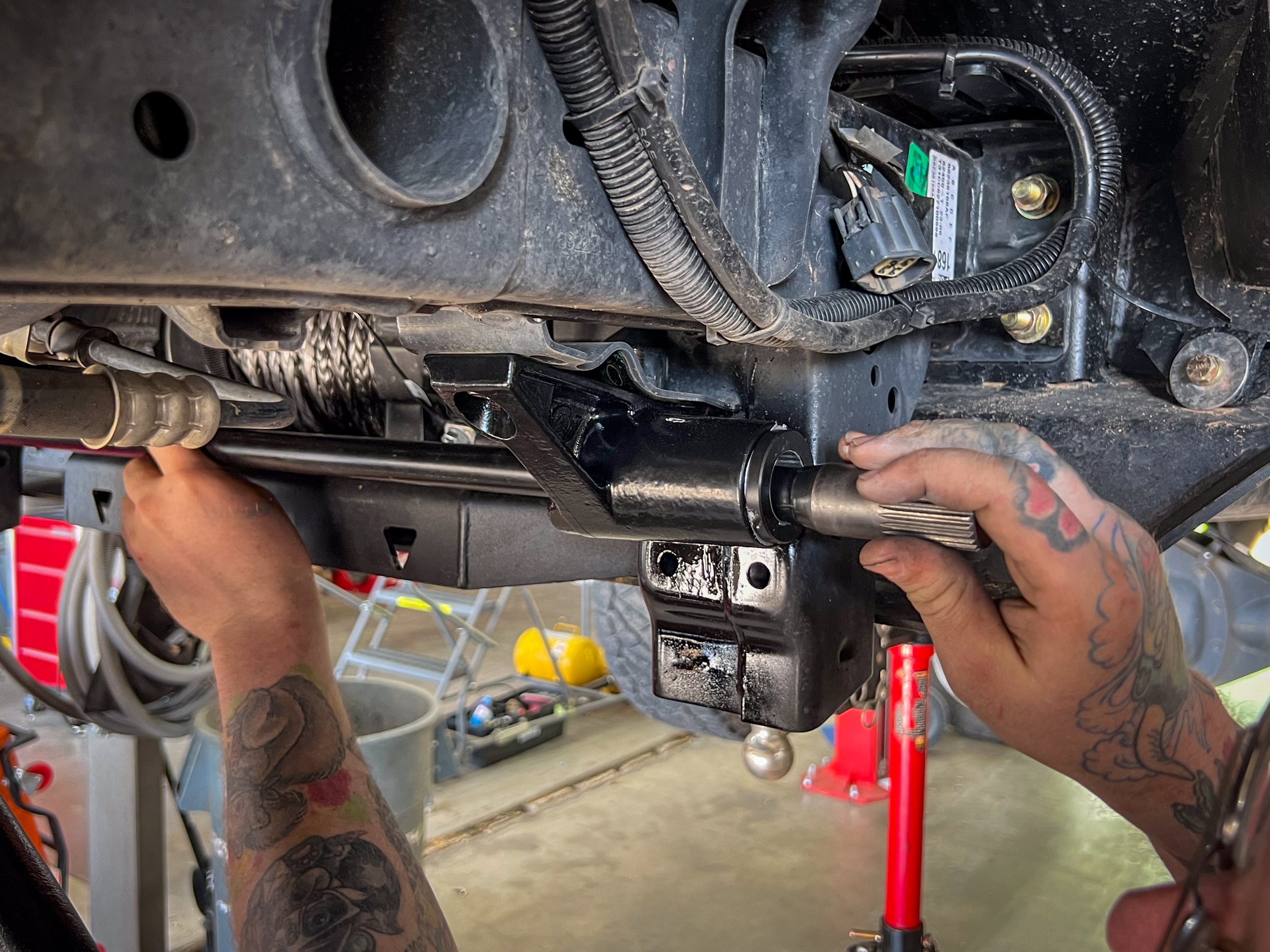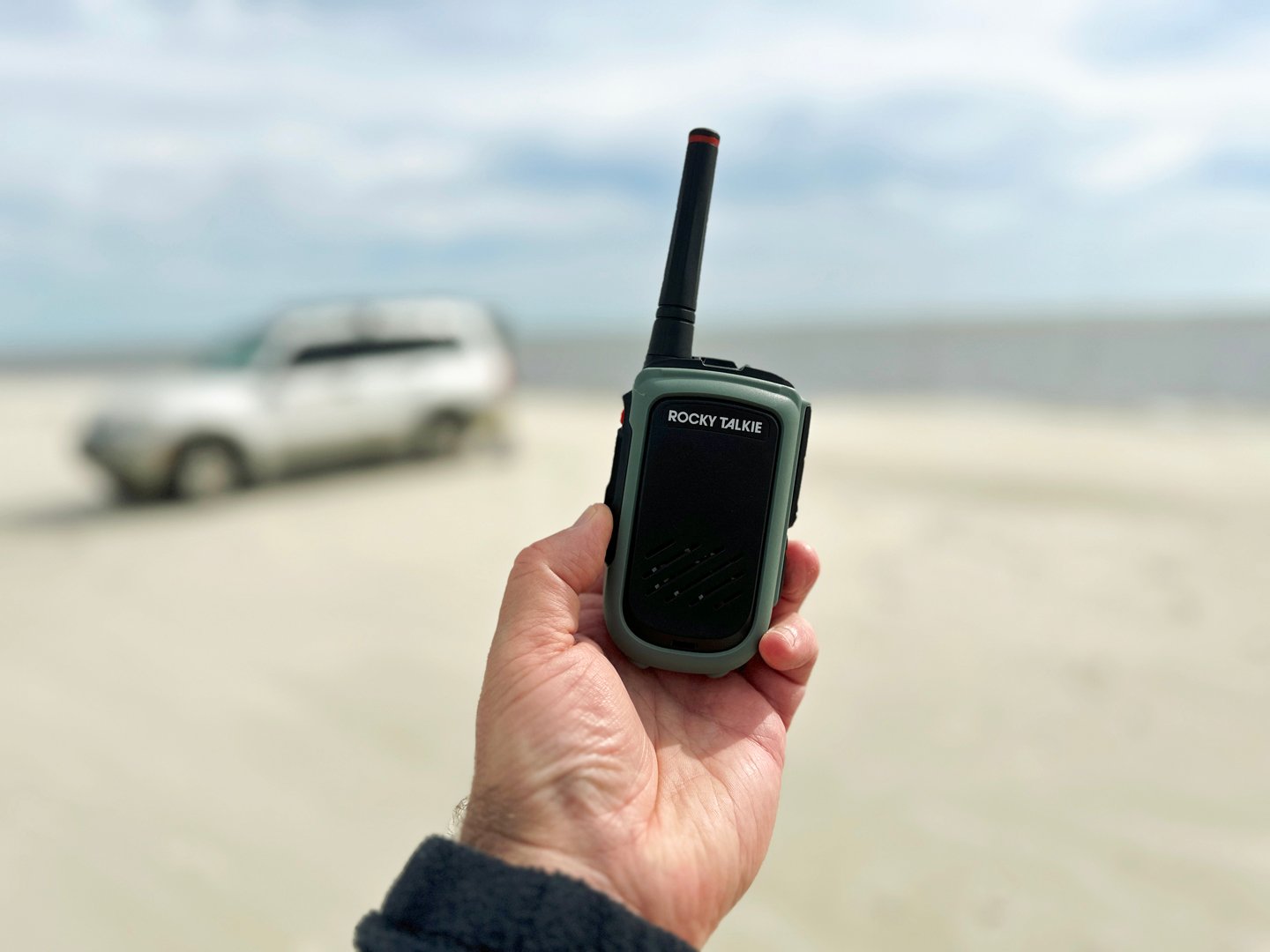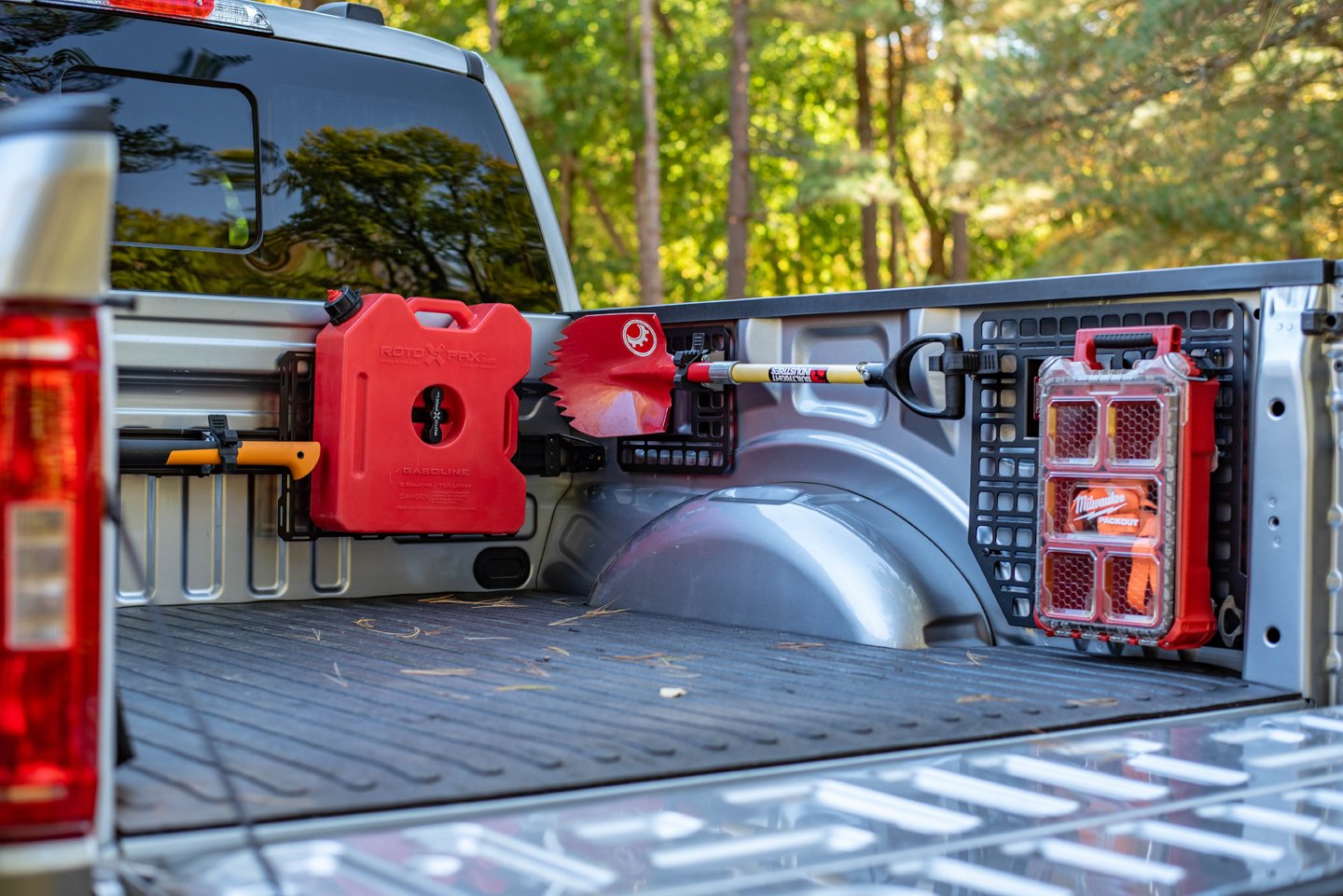When you’re in the suspension business, you have to know that the product you’re selling can live up to expectations. Shocks, control arms, leaf springs, and more have to deliver on off-road performance. In what’s known as “test and tune” sessions, companies like ICON Vehicle Dynamics take a day out to go bash on their prototype products and see if they can pass muster.
We recently got invited to come out and see what one of these days is like. The company was holding a “Durability Day” to put two new products through the wringer, going high-speed through washboards and whoops, and through water and mud as well. It’s a tough day for the parts getting tested, but it’s a blast for the guys that get to do it.
For most of the day, I rode around with Dylan in the 2019 Ranger.
We made our way to Riverside to check out the ICON headquarters. It was there that we met Dylan Evans, the founder of ICON and an accomplished engineer in his own right. We took a quick tour of the facility, checking out machining, assembly, packaging, and other facets of ICON’s day-to-day operations.
Before long, we headed outside to hop in our vehicle – a black 2019 Ranger FX4, already rocking new ICON shocks absorbers and upper control arms, as well as prototype leaf springs out back. We would meet up with another ICON driver, Caleb Kerkvliet, as the other half of the test vehicle group of that day. Caleb was driving a 2018 Jeep Wrangler JL, outfitted with a prototype spare tire carrier, in addition to the ICON shocks.
Both vehicles ran on deflated tires for the driving ahead.
Pulling off of the road north of Phelan, we got ready to test out the vehicles. Dylan and Caleb set about deflating the tires a good amount, dropping the psi into the low to mid-20s on both the Jeep and the Ranger. Having less tire pressure would let the tires deform a bit better against impacts. “Airing down for this kind of driving is more about ride comfort than gaining traction” explained Dylan.
I hopped in the Ranger with Dylan and he let the truck have it, taking off at high speed and going straight into rocky flat terrain, spotted every now and then with sizable whoops. “We’re trying to get a sense of what the rebound rate is,” said Dylan. “In off-road drop-offs, on the far side of the drop-off, the suspension compresses, and how quickly it returns to ride height is largely controlled by the valving of the shock, as well as the spring rate.”
The shocks on the Ranger had the compression knob set to “stock” at first, which was the number four setting (out of 10 total). The plan was to test the shocks in this setting first, and then make the compression stiffer, which would help navigate the whoop sections better. “We’re testing in the earlier stages,” said Dylan. “We’re also on a softer setting on the shocks right now, so that is making the suspension use up a lot of its travel and hitting the bump stops.” It should also be noted that the Ranger was using factory lower control arms, but ICON’s upper control arms, which were there to increase wheel travel.
As mentioned above, the main purpose of this off-road day trip was to test out some new products that ICON was developing. These parts were new leaf springs on the Ranger, and a spare tire carrier on the Wrangler. “We’re assessing the durability of these products,” said Dylan. “The leaf springs have to survive 1,000 miles of this kind of driving.” Up to the day of our journey, the leaf springs had survived about 120 miles.
After about 5-10 miles of driving through the whoops and washboards, we pulled over and adjusted the shocks. Dylan went from level zero to level six (out of 10), which would increase the shocks’ stiffness, but would greatly improve prerunning-style driving comfort. “The truck should handle the bigger whoops better now,” commented Dylan.
What was amazing was how well Caleb’s Jeep was keeping up with us. With its own suspension upgrades, the Jeep was actually capable of “When we do Durability Days like this, we try to have at least two vehicles for the sake of safety,” said Dylan. “But we also like to test stuff on the second vehicle, so that’s why we have the spare tire carrier on it.”
ICON was testing a tire carrier on the Jeep, and leaf springs on the Ranger.
We drove until reaching the southwest CA-247, a freeway connecting the Interstate 15 and Highway 62, and hopped onto the road. It looked like we were in the middle of nowhere. We still had the shocks on the number six setting, but the ride didn’t feel much different. It was a pretty significant change from the number one setting we were initially on, and would make a noticeable difference on whoop sections.
To Dylan, these trips were as familiar to him as riding a bike, and were aided by GPS routes that Dylan developed over years of testing. “I’ve done loads of these durability days, so I know where to take the vehicles,” he said. “A long time ago, I did shorter days. It wasn’t until we developed the Delta Joint [a uniball joint] that I took the rigs out for longer trips.”
Around noon, we stopped at a gas station to refill the Ranger and Jeep. The objective now was to head north to the Interstate 40, take an off-road shortcut to the Interstate 15, drive off-road some more, and then stop in Baker for lunch.
Before long, we made it out into the Mojave Desert, with the sun beating down and not a soul in sight. Recent rain left puddles in odd places around the landscape, which Dylan was keen to avoid as much as possible. Caleb kept up the rear, staying close enough to keep us in sight, but far enough to react if Dylan hit the brakes.
The Ranger met its quota for off-roading during the Durability Day!
We stopped near a railroad overpass and hid in the shade for a bit. Dylan hopped out to check on the Ranger’s leaf springs and other components, while Caleb did the same on the wheel carrier. He observed the carrier’s vibrations while driving and noted that the carrier was doing fine, but it made considerable noise. The Ranger’s leaf springs were still in good shape, so we were good to go.
We carried on and found a water crossing near the tracks, stretching a good 60 yards or so. Dry land was on the other side, but couldn’t tell how deep it was, so Caleb and I went first in the Jeep. We made it across perfectly, even as the water-soaked the Jeep up to the windows and onto the hood a bit. Caleb relayed to Dylan to stay to one side of the water, as that would keep the tires touching the bottom.
The Ranger made it through the water crossing, but its electronic nannies weren't happy.
Dylan made the trip across water without issue, or so it seemed. Water must have gone where it wasn’t wanted, as Dylan showed us his dashboard lighting up with all kinds of alerts. For the rest of the day, the Ranger remained stuck in a sort of limp mode, unable to reset itself despite multiple attempts.
Checking out SoCal caves was amazing.
We carried on and found our way into a canyon. Footpaths split off from the main trail and we explored them to see what lay hidden. We even crawled up into a cave, but thankfully there weren’t any bats or meth addicts inside.
We kept driving and found the desert gave way to a dune area called the Dumont Dunes. Smaller than Oceano Dunes, the area was still a blast to drive around in. Dylan took the opportunity to test out the Ranger in Sand mode and got the rear end to kick out, creating epic rooster tails.
The Ranger was incredible to mob around in the sand.
After some lunch at Baker, we started our wayward journey home, but not before stopping at the Lava Tubes to the east. Made from cooled lava boring through the earth, the leftover cave was simultaneously eerie and mystifying. It’s quite something to be underground with only small rays of light coming through the ceiling.
The day ended with us heading back to Riverside to ICON headquarters. I left with a better understanding of what goes into product testing, as well as the natural wonders right here in Southern California. It definitely makes me want to take my Explorer out for some more exploring!



